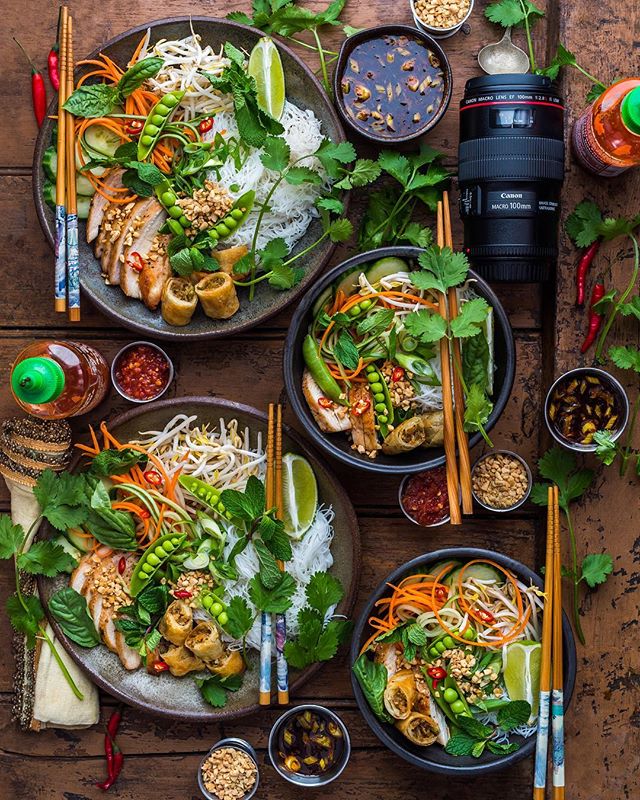How to Style Food for Photography
Food photography is a visual language, and food styling is its grammar. It’s the art of transforming an everyday dish into a captivating composition, a symphony of textures and colors that tells a story and ignites cravings. Aspiring food photographers, this is where the magic happens – on the styling plate, not just behind the lens. So, grab your apron (metaphorically, of course) and let’s delve into the delightful world of food styling!

Less is Often More: Embrace Negative Space
Don’t overcrowd your plate! Negative space, the empty areas around your food, is your friend. It allows the viewer’s eye to focus on the main attraction – your culinary masterpiece. A minimalist approach creates a sense of elegance and lets the beauty of the food shine through.
Think in Layers: Building Dimension and Depth
Food styling is all about creating depth and dimension. Think about layering elements on your plate. Start with a base layer, like a bed of greens or a smear of sauce. Then, add your main ingredient, followed by smaller garnishes and finishing touches. This layered approach creates a visually interesting composition that draws the viewer in.
Color Harmony is Key: Creating a Pleasing Palette
The colors of your food and props should work together in harmony. Use the color wheel as a guide. Analogous colors (those next to each other) create a peaceful and pleasing aesthetic. For example, pair vibrant orange salmon with a bed of leafy greens, or complement a bright yellow curry with earthy brown plates. Experiment with contrasting colors for a more dynamic look, but ensure they don’t overpower the food itself.
Texture Tells a Story: Adding Visual Interest
Texture plays a vital role in creating captivating food photography. Juxtapose smooth textures like silky sauces with the roughness of a rustic wooden table. Balance the delicate crunch of fresh vegetables with the fluffy texture of mashed potatoes. These textural contrasts add depth and dimension to your photos, making them more visually engaging.
Freshness is King: Food Should Look Alive
Food photography is all about capturing the essence of a dish at its peak freshness. Wilted lettuce or overcooked vegetables are a no-no. Use fresh ingredients that are bursting with color and life. A spritz of water can add a touch of dew to fruits and vegetables, while strategically placed herbs can create a sense of vibrancy.
Plating is the Stage: Setting the Scene
The plate you choose becomes the stage for your culinary masterpiece. Consider the size, shape, and color of the plate in relation to your food. Simple, clean plates work well for most dishes, allowing the food to be the star of the show. For a more rustic aesthetic, consider textured plates or wooden boards. Remember, the plate should complement the food, not compete with it.
Props: Adding Personality and Context
Props can elevate your food photography by adding personality and context. Think about the story you want to tell with your image. A vintage teacup and lace tablecloth can evoke a sense of nostalgia for a dessert photo, while sleek metal cutlery and minimalist plates create a modern and sophisticated feel. Don’t be afraid to experiment with unexpected props, but remember, they should enhance the image, not distract from the food.
Lighting Matters: Let Your Food Shine
The right lighting can make or break your food photography. Natural light is often considered the holy grail, offering a soft and flattering glow. Experiment with different angles – sidelighting creates depth and texture, while front lighting emphasizes vibrant colors. If natural light is limited, diffusers can soften harsh shadows, and bounce flashes can add fill light.
Edible Garnishes: Beauty You Can Eat
Edible garnishes are the finishing touch on your styled plate. Fresh herbs like thyme, rosemary, or basil add a pop of color and freshness. A sprinkle of edible flowers can add a touch of whimsy. Even strategically placed slices of fruit or vegetables can enhance the visual appeal of your dish. Remember, garnishes should be edible and complement the overall flavor profile.
Get Creative and Experiment: Embrace Your Style
Food styling is an art form, and there are no hard and fast rules. Don’t be afraid to experiment and get creative! Explore different color palettes, textures, and props to find your unique style. The most important thing is to have fun and create visually appealing compositions that celebrate the beauty of food.
So, aspiring food photographers, grab your ingredients, unleash your creativity, and get ready to style your food like a pro! With a little practice and these styling tips in mind, you’ll be transforming everyday dishes into mouthwatering masterpieces that will have viewers reaching for their forks